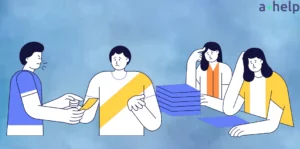In a report from The Hill, Nvidia CEO Jensen Huang stresses the increasing importance of artificial intelligence (AI) expertise in both individuals and businesses. In his address at the National Taiwan University commencement ceremony, Huang made several critical statements underscoring the revolutionary role of AI technology.

✅ AI Essay Writer ✅ AI Detector ✅ Plagchecker ✅ Paraphraser
✅ Summarizer ✅ Citation Generator

Key Takeaways:
- AI expertise is critical for individuals and businesses to remain competitive in the future landscape.
- AI technology will not only replace certain jobs but also create novel ones that have not existed before.
- It’s pretty evident that the influence of AI is expanding rapidly, especially when you see heavy-hitting companies like Microsoft and Tesla weaving it into their services. Their adoption of AI further underscores the ever-increasing significance of this technology in today’s world.
Huang, who has been at the helm of Nvidia Corp since 1993, advised the graduating class that mastery of AI is critical to avoid being left behind in the rapidly changing corporate landscape. He underscored that AI will transform every single job, while agile companies embracing AI will boost their positions in their respective markets.
“Agile companies will take advantage of AI and boost their position. Companies less so will perish,” Huang stated during his commencement speech, as reported by Bloomberg News.
“While some worry that AI may take their jobs, someone who’s expert with AI will.”
The Nvidia CEO also highlighted how AI will be used as a ‘co-pilot’ in numerous industries to augment workers’ productivity and efficiency. This increased reliance on AI technology, according to Huang, will also create an array of new jobs, while making certain others obsolete.
The AI-Powered Future
His remarks come at a time when other notable companies have introduced or announced their own AI-centric services. Earlier this year, Microsoft unveiled its Teams Premium service, powered by OpenAI’s ChatGPT messaging service, which offers advanced, human-like responses to user queries.
Billionaire Elon Musk, CEO of Twitter and Tesla, has announced plans to launch his own AI platform named ‘TruthGPT.’ Musk’s platform is poised to challenge Microsoft and Google’s AI chatbots with its promise of a “maximum truth-seeking AI that tries to understand the nature of the universe.”
Despite the growing enthusiasm for AI technology, concerns have also arisen, particularly among parents and educators. Some suspect that students have been using AI tools like ChatGPT to cheat on assignments, prompting several school districts to ban the device tool. In response to these concerns, Sen. Rick Scott introduced the AI Shield for Kids Act, legislation that would require parental consent for children to use AI technology.
Final Thoughts
As AI continues its march towards becoming an integral part of every industry, Huang’s remarks serve as a reminder of the importance of being adaptive and acquiring AI expertise to thrive in this new era.
Diving into Deep Learning: A Beginner’s Tutorial with Real-world Examples
Deep Learning, a subset of machine learning, is powering the most exciting advancements in AI, such as voice assistants, autonomous vehicles, and even health diagnostics. If you’ve been fascinated by these technological leaps and want to understand the magic behind them, this step-by-step tutorial is for you. Let’s take a closer look at deep learning and break it down through practical examples.
Getting Started with Deep Learning
To start, you’ll need a basic understanding of Python and some familiarity with machine learning concepts. If you’re starting from scratch, don’t worry. There are many online resources available, such as Codecademy and Coursera, which offer beginner courses in Python and machine learning.
Now, let’s dive into our first practical example – creating a simple neural network for image classification.
- Set up your environment: Install Python and TensorFlow. TensorFlow is an open-source machine learning library developed by Google, which is excellent for deep learning. You can install it using pip, a package manager for Python. Use the command “pip install tensorflow” in your terminal.
- Import necessary libraries: You’ll need to import TensorFlow and a few other libraries in your Python script. Here’s how:
import tensorflow as tf
from tensorflow import keras
import numpy as np
import matplotlib.pyplot as plt
- Load your dataset: We’ll use the popular MNIST dataset, which consists of 70,000 grayscale images of handwritten digits. You can load it directly from TensorFlow:
mnist = keras.datasets.mnist
(train_images, train_labels), (test_images, test_labels) = mnist.load_data()
- Normalize the data: Normalize the pixel values from [0, 255] to [0, 1] for better performance:
train_images = train_images / 255.0
test_images = test_images / 255.0
- Build the model: A deep learning model consists of layers. We’ll start with a simple model with one input layer, one hidden layer, and one output layer:
model = keras.Sequential([
keras.layers.Flatten(input_shape=(28, 28)),
keras.layers.Dense(128, activation=’relu’),
keras.layers.Dense(10)
])
- Compile the model: This is where you specify the optimizer, loss function, and metrics to track during training:
model.compile(optimizer=’adam’,
loss=tf.keras.losses.SparseCategoricalCrossentropy(from_logits=True),
metrics=[‘accuracy’])
- Train the model: Feed your model the training images and corresponding labels. The model learns to associate images with labels:
model.fit(train_images, train_labels, epochs=5)
- Evaluate the model: Now it’s time to test the model on the test dataset to see how well it learned to classify images:
test_loss, test_acc = model.evaluate(test_images, test_labels, verbose=2)
print(‘\nTest accuracy:’, test_acc)
With these steps, you’ve just built and trained your first deep learning model! Congratulations on your accomplishment. This simple model is the foundation for many other, more complex deep learning models. Stay tuned for more tutorials, where we’ll build upon this foundational knowledge and explore more advanced deep learning concepts.
Related Stories:
Khan Academy’s AI Chatbot: A Transformation or a Challenge for Education?
Embracing the Future or Courting Joblessness? Experts Weigh In on AI’s Role in the Workforce
The AI Evolution in Education: More than Just ChatGPT
Follow us on Reddit for more insights and updates.





Comments (0)
Welcome to A*Help comments!
We’re all about debate and discussion at A*Help.
We value the diverse opinions of users, so you may find points of view that you don’t agree with. And that’s cool. However, there are certain things we’re not OK with: attempts to manipulate our data in any way, for example, or the posting of discriminative, offensive, hateful, or disparaging material.